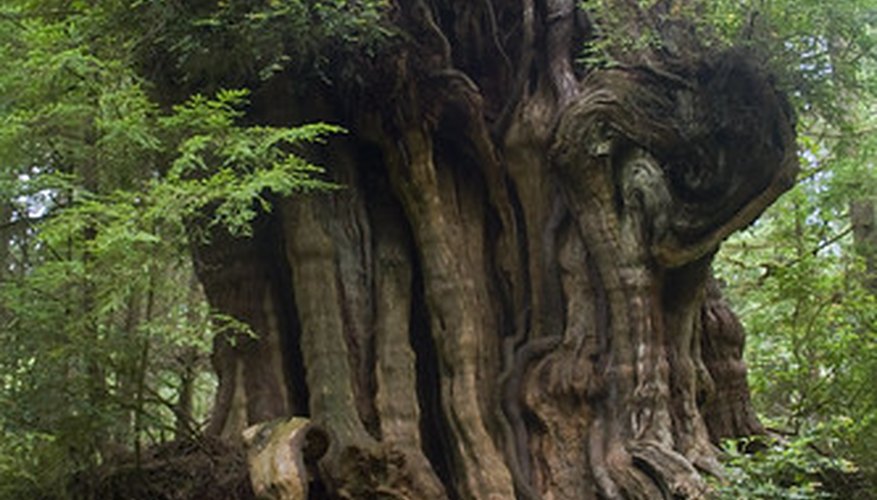The sycamore tree symbolises protection, divinity, eternity, and strength. It appears in the Egyptian "Book of the Dead," and the Bible. The Lafayette Sycamore that towers over Brandywine Battlefield Park in Pennsylvania, was already 168 years old when it sheltered the troops of Generals Washington and Lafayette at the Battle of Brandywine in 1777. An American artist and Americans themselves have transformed the uprooted sycamore tree at ground zero in New York City into a symbol of protection, hope and strength.
Sycamores Grow Old and Tall
Sycamore trees have broad, maple-like leaves and a trunk and limbs of mixed green, tan, and cream bark that eventually turns to a smooth white when the tree matures. Sycamores belong to one of earth's oldest family of trees, Platanacea. Scientists estimate that their family is over 100 million years old. Sycamore trees can live as long as 600 years, and in favourable conditions can grow as high as 100 feet, according to the East Tennessee State University Arboretum (http://www.etsu.edu/arboretum/totw.html).
- Sycamore trees have broad, maple-like leaves and a trunk and limbs of mixed green, tan, and cream bark that eventually turns to a smooth white when the tree matures.
- Sycamore trees can live as long as 600 years, and in favourable conditions can grow as high as 100 feet, according to the East Tennessee State University Arboretum (http://www.etsu.edu/arboretum/totw.html).
Egyptian Symbols of the Divine
The "Book of the Dead" portrays two divine sycamore trees as the tree of heaven and the tree of earth. In "Sacred Places," Christopher Witcombe, a professor of art history at Virginia's Sweet Briar College wrote that sycamores were representations of the Egyptian goddesses Nut, Isis, and Hathor. He noted the trees were often planted near tombs, and coffins made of its wood were said to return the dead "to the womb of the mother tree goddess."
Biblical References
The sycamore tree of the Bible is actually the sycamore fig tree. A few Biblical examples involving the sycamore tree include the prophet Amos sitting under a sycamore tree, sycamores trees being cut down and replaced with cedars in Isaiah, and Zacchaeus climbing a sycamore tree to see Jesus in Luke.
Manhattan Farmers Planted Sycamores
The early American colonists christened the American sycamore tree because of its resemblance to the English sycamore maple. The American sycamore is North America's largest native broad-leaf tree, often planted in yards and parks. Manhattan farmers planted sycamore trees in the 18th century, and the American sycamore has adapted well to urban living. It is New York City's tallest street tree and the most common tree in Brooklyn, New York.
- The early American colonists christened the American sycamore tree because of its resemblance to the English sycamore maple.
- The American sycamore is North America's largest native broad-leaf tree, often planted in yards and parks.
A Sycamore Saves St. Paul's Chapel
St. Paul's Chapel, part of Trinity Church, stands across the street from where the World Trade Center Towers once stood. Built between 1764 and 1766, St. Paul's is the oldest continuously used public building and oldest church in the region. When the World Trade Towers collapsed on September 11, 2001, a 70-year-old sycamore tree fell, its branches that shielding the chapel from falling debris.
St. Paul's Chapel served as a base for rescue and recovery operations after September 11th. Though the tree itself did not survive, the sycamore's role as the chapel's protector has been memorialised by Pennsylvania artist Steve Tobin. Tobin cast the tree's remaining stump and root system in bronze to create a 20-foot-long, 12-foot high life-like sculpture. The piece was installed in the Trinity courtyard and dedicated on Sept. 11, 2005.
- St. Paul's Chapel, part of Trinity Church, stands across the street from where the World Trade Center Towers once stood.
- Though the tree itself did not survive, the sycamore's role as the chapel's protector has been memorialised by Pennsylvania artist Steve Tobin.
